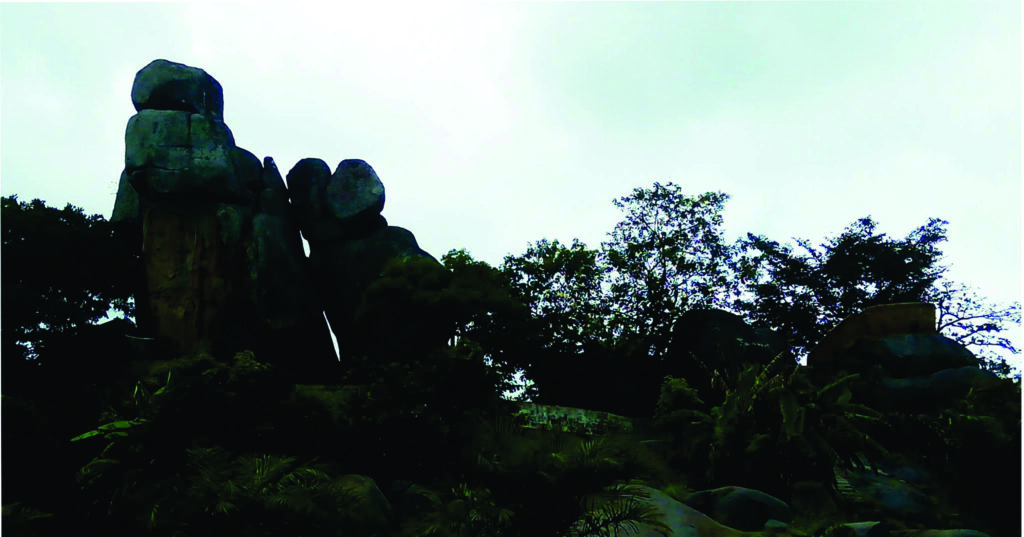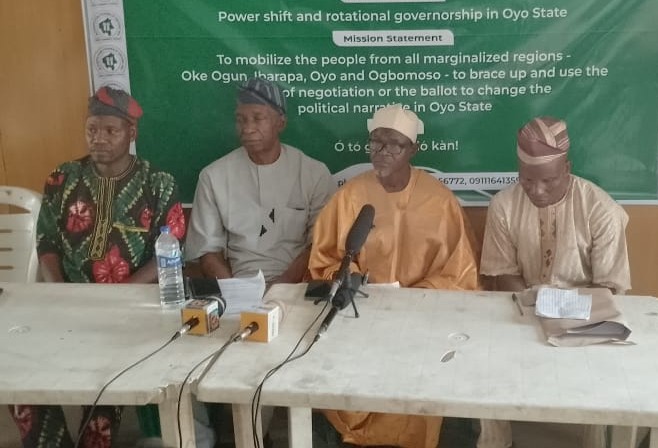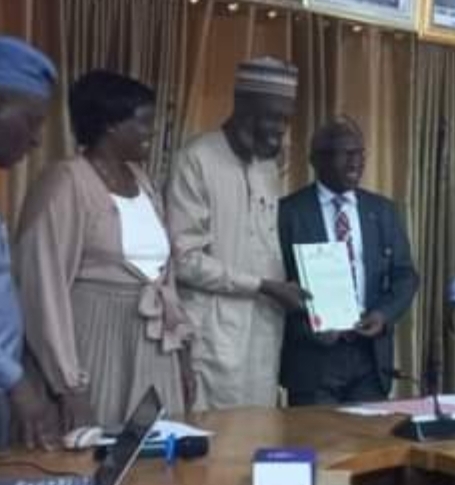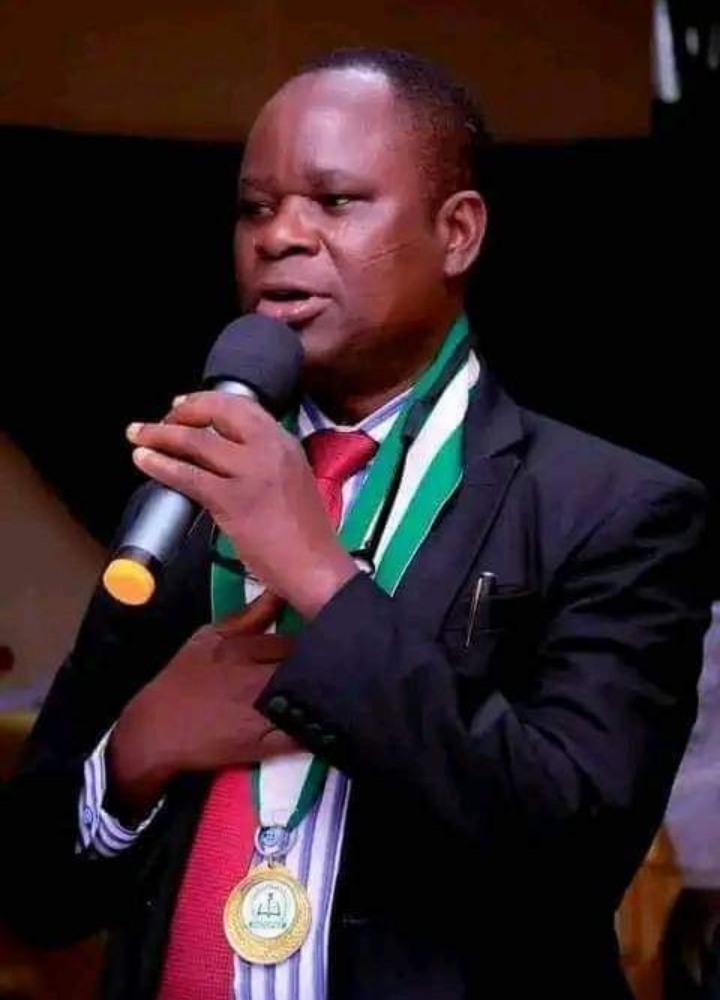
Location :
A town in a valley, Òkehò is a developing community in the Òkèògùn region of Oyo State.[1] and it is being surrounded by massive rocky mountains with big ancient holes, caves and valleys from where it derived its name Òkè Ihò which metamorphosed into Òkehò in the course of many years.
The towns around this ancient town are Ìlerò, Ilùà, Ìṣẹmi’lé, Ayétòrò-òkè, Ìwéré-òkè, Ìlàjí-òkè and Ìgànná.[2]. But, there are many village settlements under this historical towns where the indigenes and residents are doing their farming and hunting businesses that the people are known for.
A valley-town is domiciled on a plateau with beautiful, breathtaking, lovely landscapes whose topography can serve as tourist attractions.
In a nutshell, Òkehò has a beautiful and glorious panoramic view [3]
History
Originally, there was no town called Òkehò. But, in the present settlement where the current Òkehò is, there were eleven different settlements who had their different origins with each settlement under a village head called Baálẹ̀ or chief.
The first eleven settlements were Ìjò, Pàmọ, Bodè, Ọgàn, Ìsalè-Alúbọ́, Gbọ́njẹ̀, Òkèògún, Ìṣẹmi, Ìmọbà, Ìṣìà and Òlèlè.
But, in the course of history at different times, many other communities and people from different other towns and villages joined them in both Òkehò-Ahoro and the current Òkehò. Of note, among the people and community that joined them that have become big quarters (àdúgbò) on their own are Aṣí, Ajélàńwá, Sàngótẹ̀, Fowọ́rọpó, Ìṣàlẹ̀-Àfáà, Yàba, Ògbíntẹ̀, Ìlúpéjú, Àṣàkà, etc.
Before they amalgamated to become one united front, all the above eleven towns were vulnerable to the incessant attacks and raids from the Dahomey Marauders and Fúlàní Jihadists.
It was this unpleasant experiences of the eleven settlements that made Ońjo Ariléṣiré, the then Ońjo of Ìjò town and a descendant of Òjó Òròǹnà who was a prince of Ìlaròó kingdom that migrated to settle at different spots around the present day Òkehò where he met Òlọ́fin, a powerful hunter, to invite all the leaders of the other ten communities to let them come together on a confederacy arrangement to withstand their attackers.
In essence, what brought the eleven different communities together was how to survive and secure themselves from their common enemies who were raiding them to turn them into slaves.
At this juncture, it is good to remark that the progenitors of Òkehò has demonstrated a great wisdom to achieve a great feat. Before people of different backgrounds and orientations can agree to come together as one, it must have called for great sacrifices from each of them. We can see how difficult it has been for Nigeria subnationalities to come together where the ethnic groups are not yet bonded and united after many years of being under one union since the 1914 almagamation.
After the confederacy arrangement was achieved, the people of Òkehò, in the ancient time, moved to Òkehò-Ahoro where they lived for many years. That was where “Òkè ihò” or “Òkè-ihò” which later became “Òkehò” was adopted to be the name of a town as it is being called up till today.
Furthermore, it is good to state that all the settlements in this present Òkehò were also in Òkehò-Ahoro which today is a site Òkehò people are planning and working to turn into tourism goldmine because of the historical activities and relics of events that are scattered all around the old site. It was at Òkehò-Ahoro that Ońjo Arílésiré who was the initiator of the amalgamation and confederacy arrangement was gradually adopted to be the overall leader and king.
From the king over ìjò quarter, he became the king over the entire town, Òkehò. This was not easy as there were many cases of insurrections that led to the killing of some Ońjos as a result of leadership tussle from the other chiefs who did not accept Ońjo to be the king over Òkehò town before there was stability eventually.
In other words, becoming the overall head by Ońjo was not easily conceded. It came with the payment of the ultimate prices through blood-shed before peace began to reign after Ońjo Olúkìtìbì was killed as the last sacrificial lamb.
In addition, as a result of different acts of violence and gruesome killing of the kings and outright rebellion by Òkehò people against the Colonial authority, the colonial masters, under Captain Ross, forced the people of Òkehò that time to move back to this present location they were before they moved to Òkehò-Ahoro. The movement of the people took place in 1917 and Òkehò people celebrated the centenary (100 years) of the relocation of their ancestors to this present site.[6].
Under different Ońjos (the name of the traditional paramount king of Òkehò), many events took place in Òkehò that require further research. Some of the materials that will help anyone who has interest in such research work are “Ìwé Ìtàn Òkehò” written by a committee that was led by Pa. T. A. A Ládélé, a great and celebrated Yoruba author of the prose and poetry genre, “Okeho in History” that was launched to celebrate the 2017 Centenary written by Prof. Ségun Gbádégesin, the Asíwájú of Òkehò and ////, a drama that captured the life and time of Ońjo Olúkìtìbì the last king that was killed on the throne written by Olútàyọ̀ Ìrántíòlá.
After Ońjo Bello Ládòkun from Etíhànlú lineage, Ońjo Rowland Èrèọlá from the Aféníyì family lineage reigned between 1975 and 1983.
After Ońjo Èrèòlá, there was a long year of interregnum which lasted for almost fifteen years because the royal families had been politicised and one candidate in the same family did not succumb to the other candidate of the same family.
After the case was settled in court, HRM, Ońjo Y. O Sùnmọ́nù from the Etíhànlú family lineage reigned briefly for a very short time and the season of interregnum continued until 2003 when a new king emerged from the Adéìtán family lineage.
The current Ońjo, His Royal Majesty, Oba Rafiu Osuolale Mustapha, Adeitan II. is the 18th Ońjò on the throne. His reign has been peaceful and many developments like establishment of First Bank, College of Health Science and Technology, National Open University, Magistrate Court, Federal Government Hospital, etc have come to the town since he became the king. We pray that many more of such development will still enter Òkehò sooner than the indigenes of Òkehò can imagine as many of the indigenes home and abroad are working assiduously round the clock to pursue all possibilities to see that Òkehò moves to greater heights of their dream.
People
The people of Òkehò are of Yoruba ethnic nationality. As mentioned under their history, the people of eleven original towns and those other towns who came to join them were migrants from different Yoruba communities and backgrounds. Some came from Ọ̀yọ́ Ilé, some from Ṣakí, Some from Ìlaròó and other towns and villages like that.
But, in spite of this diversity in Òkehò community, the people speak a distinct variation of Yoruba language called the Òǹkò dialect as depicted in the video as an indigenous man speaks the dialect.[8]
Òkehò people are hospitable and accommodating people as many people who are from different Yoruba towns and other tribes have been living among them for many years to the extent that the descendants of many of them have adopted Òkehò to be their town.
Examples of such are people from Ògbómọ̀ṣọ́, Fìdítì, Ìré, Ìbàdán, Lagos, the North, Middle Belt, Southeast, Southsouth and neigbouring countries like Republic of Benin, Togo and Ghana.
Òkehò people are lovers of education and the town has produced many University, polytechnic and NCE graduates who are working in different government establishments and private companies or institutions all over the world.
Òkehò people are travellers. Many of them are scattered all over the villages, towns and cities like Lagos, Ibadan, Osogbo, Abuja, Port Harcourt, Bayelsa, Kaduna, Katsina, Kano, Maiduguri and many other towns like that.
In addition to this, many are sojourning in the diaspora within the Africa continent and, also, in Britain, Europe and America.
The people of Òkehò are practising two main religions – Christianity and Islam. However, there are few adherents of the Yorùbá indigenous religion like Ifá, Sàngó, Ògún, Oya, etc remaining in different homes.
There has never been any religious crisis in Òkehò unlike in some Yorùbá towns because the people know and accept that they are from the same bloodline. They see themselves as brothers and sisters and, like in every Yoruba town and community, there is no house without Christians, Muslims and traditional religious worshippers.
Òkehò people are practitioners of “syncretism” to borrow the word of Prof. Ségun Gbádégesin that he used to describe people who practice different religions in “Okeho In History” that I mentored earlier.
The popular saying among Òkehò people in the last was “ìgbàgbọ́ ọ̀ pé á má ṣ’orò” or “Ìmàle ò pé a má ṣ’ òrò (meaning Christianity or Islam does not prevent one from practicing traditional indigenous religion).
With this syncretic approach to religion in view, it cannot be far from the acceptable truth which has formed the reason why there has not been any religious crisis in Òkehò like in other Yoruba towns where they have experienced incessant religious wars.
Furthermore, Òkehò people have rich cultures, customs, ethics, norms, values, traditions and philosophies that one cannot be mentioning one after the other here. One needs to live among them before one can understand all their ways of life and living.
Talking about festivals, the Christains always celebrate Easter and Christmas in grand style. The Muslims used to celebrate Idel Fitri (Ìtúnu Ààwẹ̀) and Sallah (Iléyá) in grand style.
For the traditional indigenous worshippers, Egúngún and Orò were the most popular and prominent. During Egúngún which always last for fifteen days, all manners of Egúngún used to come out at different days. The prominent ones among them were Ológbojò, Ọ̀gbọ̀ngbọ́n, Alátẹ-ọ̀run, Lébe and Ońpẹ̀pẹ́.
The Orò festival always take seven days one’s in a year. During this festival, the women will not come out for certain hours of the day. On the last day called “Àhálà”, the women will be indoor all through.
In addition, during the Orò festival in those days, the satirists called the “Ìṣèkús” used to come out in the night. Their mission used to be to correct the social ills by throwing lampoons at those people who were into one social misconduct or another in the society.
The “Ìṣèkús” used to sing against fornication, adulterery, those who have concubines, thieves, etc and, through this, many people used to repent from their evil behaviours.
Before the modern day court, church and mosque weddings, traditional weddings, in the past, in Òkehò used to be colouful as they witnessed what they call “ẹkún ìyàwó”.
“Ẹkùn Ìyàwó” was an oral song that the bride used to sing amidst display of emotions and weeping to demonstrate that she was going to miss her parents and the other members of the family she was leaving behind.
Pa. T. A. A Ládélé, a native of Òkehò did justice to this genre of oral literature in his book titled “Ẹkùn Ìyàwó” which was widely read in the secondary schools and many higher institutions of learning in the past.
Òkehò people are socialites. They used to come together as age-mates and form social groups. It has been through this social groups that development has been coming to the town.
Part of the communal social life in the past have witnessed the rising of different musicians who delved into different genres of songs. We used to have Ìbídòkun from Aṣí/Pàmọ̀ area whose songs used to witness crowds from different towns. During Christmas, many people, especially ladies, that they called “T’Èkóbọ̀” used to flood any party where “Ìbídòkun” had night show.
Another musician was Bánmọ́rẹ́ Àjàní from Ìṣìà area who took after Haruna Ìṣọ̀lá’s Àpàlà genre. His party was also big parties in those days. Then, we had Àmùro and Jágùà Ṣẹ̀kẹ̀rè/Dùndún Talking Drum from Ìjò area who also used to pull crowd both during the day and night parties.
Later, in the 1980s, when Fújì genre was reigning and Síkírù Àyìndé Barrister, Kollington Àyìnlá and Wàsíù Àyìndé were the reigning musicians in the Southwest Nigeria, young musicians like Làtí Fújì, Fàtáì Fújì and Ẹ̀là Àbátá also delved into Fújì Music to entertain the people of Òkehò.
All of the above were organised music bands, but we have many freelancers who used to go about on parties to entertain Òkehò people. These freelancers ate still very much around today at parties and people used to enjoy them and spray money on them.
At this juncture, it is good to remember other groups like the “rárà group” which are women who used to sing special type of ewì renditions at parties. We also have the Gẹ̀lẹ̀dẹ́ singers, the Ìjálá singers and many others who are still making social life enjoyable for the people of Òkehò.
In addition to the social groups and those who are making social life enjoyable for Òkehò people, are the socio-cultural associations. The umbrella socio-economic organisation for all Òkehò associations is Ègbẹ́ Ọmọ Ìbílẹ̀ Òkehò. Through this Ẹgbẹ́, a lot of achievements have been attained.
Beside the Ègbé Ọmọ Ìbílẹ̀ Òkehò, we have the ODA whose branches are all over the world including USA/Canada and Britain. Also, through ODA many developments have entered Òkehò town.
We have the OSTRADEF whose mission is for the economic development of Òkehò and this group has done its best to move Òkehò forward with a number of projects that have been embarked upon.
Finally, we have Àpérò Ọmọ Òkehò which is the latest of all the groups. The vision of Àpérò is to move Òkehò to greater heights and great and dynamic steps have been taken by the executive body to actualise this vision. The blueprint of Àpérò has been documented and it is very rich and robust that, if implemented, will transform Òkehò into a city in no distant future.
Lastly, there are many things to write about the people of Òkehò that no single book can contain. But, the belief is that whatever we do today will become history tomorrow. So as time goes on, whatever becomes history will become documented to form part of the future additions that future writers will be adding to this piece.
Òkehò is an ancient town where African power still reside. As mentioned under the History segment, this power had been demonstrated by the progenitors Of Òkehò to fight and conquer the Dahomey Marauders and Fúlàní Jihadists.
This power was also demonstrated during the Colonial period when Òkehò people led the uprising against the Colonial master in a fight that has been popular regarded in history as Òkehò/Iseyin Riot of 1916 when they stood against the Colonial government for centralising control over the people.
Recently, in a couple of times, Òkehò people have demonstrated that there is still reservoir this ancient power. A good example was the resistance that young Òkehò local hunters put up to overpower the high-power armed robbery incidence against the First Bank, Òkehò, the Police Station and other institutions in Okeho on July 29, 2020.
Contrary to all manner of negative news that were spread during that time, what happened was that Òkehò local hunters and members of the Vigilante group overpowered the armed robbers, killed four of them and retrieved the money they stole.
After this, they called the bank officials to come and take their money when the miscreants among them who did not even participated in the fight against the robbers bombarded them and relooted the money.
What happened was an unfortunate situation that turned what could have made the local hunters and Vigilante become celebrated heroes to become villains. This action has caused the people of Òkehò and the the people of the three Local Governments – Kájọlà, Ìtẹ̀síwájú and Ìwájọwà – a lot of setback as their is no one commercial bank in any of them.
Efforts have been made by well-meaning people of Òkehò and those from the neigbouring Local Governments to get the bank reopened. But, all efforts have not yielded any positive result and the people from many communities that make up these Local Governments are really suffering as the nearest bank is in Iseyin.
On this matter, reopening of First Bank or any other Bank that will ease the troubles of the people has been the single prayer point of the people of Òkehò. One sure thing is that this prayer will be answered one day and, the prayer is that, that day of answered prayer should not be very far.
Another thing worthy of note is that, like many Yorùbá race, Òkehò people are known for their Ọmọlúàbí’s behaviour. They are people of good character values







Nice one, God continue to bless my home town